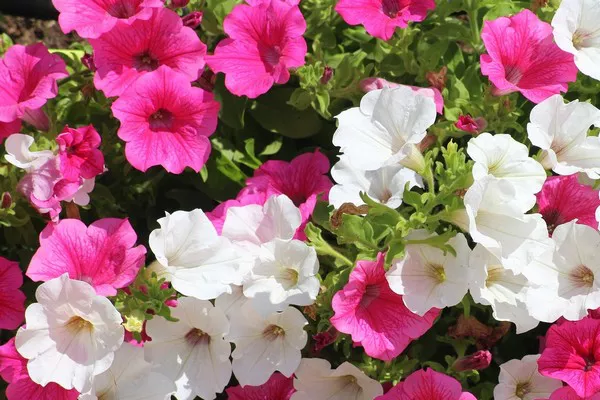Aphids are tiny, sap-sucking insects that can wreak havoc on your garden or indoor plants. These pesky pests can reproduce rapidly and cause considerable damage to your beloved blooms. To effectively manage aphid infestations, it’s crucial to understand their preferences when it comes to the plants they target. In this article, we’ll explore what flowers aphids like and help you protect your greenery from these troublesome insects.
Aphids: A Brief Introduction
Aphids, scientifically known as Aphidoidea, belong to the order Hemiptera and are infamous for their destructive feeding habits. These soft-bodied insects extract vital nutrients from plant phloem using their piercing mouthparts, causing leaves to curl, turn yellow, and stunt plant growth. Understanding their flower preferences is essential for proactive pest control.
1. Sweet Nectar Temptations for Aphids
Aphids have a sweet tooth – or rather, a sweet stylet. They are particularly drawn to plants that produce nectar-rich flowers. Blooms with high nectar content, such as marigolds, asters, and dahlias, are irresistible to aphids. These insects feed on the sugary liquid, called honeydew, excreted by aphids after they’ve indulged in a nectar feast. By planting these attractive blooms in your garden, you might inadvertently invite aphids to take up residence.
2. Color Allure: Aphids’ Visual Preferences
The color of flowers can significantly influence aphid attraction. Studies have shown that aphids are more likely to infest plants with certain color blooms, notably yellow and light green. These hues resemble new, tender growth and are perceived as ideal feeding grounds by aphids. So, flowers like sunflowers, chrysanthemums, and mums, which flaunt vibrant yellow petals, may be more prone to aphid infestations.
3. Aphids’ Seasonal Favorites
Aphids are not indiscriminate in their flower choices; their preferences can vary depending on the season. In the spring, when young, succulent plant growth is abundant, aphids often target flowering plants like roses, tulips, and lilies. As the seasons progress, their tastes may shift towards late-blooming flowers such as zinnias, cosmos, and daisies. Being aware of these seasonal shifts can help you anticipate and combat aphid infestations effectively.
Aphid Control Strategies
1. Aphid-Repellent Flowers
To protect your garden from aphid invasions, consider planting flowers known for their aphid-repellent properties. Herbs like basil, mint, and chives can act as natural deterrents, discouraging aphids from settling nearby. Additionally, aromatic flowers like lavender and marigolds emit scents that aphids find unpleasant, further reducing the likelihood of infestations.
2. Companion Planting
Companion planting is a gardening technique that involves strategically placing plants together to enhance their growth and deter pests. To deter aphids, consider planting aphid-repelling flowers like nasturtiums alongside susceptible plants. The strong odors emitted by nasturtiums can confuse aphids, making it difficult for them to locate their preferred flowers.
3. Aphid Predators: Encouraging Beneficial Insects
Aphids have a range of natural predators, including ladybugs, lacewings, and parasitic wasps. Attracting these beneficial insects to your garden can help keep aphid populations in check. You can plant flowers like dill, fennel, and yarrow to provide nectar and shelter for these predators, creating a balanced ecosystem that minimizes aphid damage.
4. Cultural Practices for Aphid Management
In addition to flower choices, cultural practices can also play a significant role in aphid management. Regularly inspect your plants for aphid infestations and prune affected parts to prevent their spread. Applying a strong stream of water to plants can dislodge aphids from leaves, reducing their numbers. Furthermore, practicing good garden hygiene by removing debris and weeds can eliminate hiding spots and breeding grounds for aphids.
5. Chemical Alternatives: Last Resort Aphid Control
While natural methods are preferred, chemical insecticides can be used as a last resort for severe aphid infestations. However, it’s essential to choose products that are safe for beneficial insects and the environment. Always follow the instructions carefully and consider the potential impacts on non-target species. Aphid management with chemicals should be a well-considered choice and not the first line of defense.
Conclusion
In conclusion, understanding what flowers aphids like is essential for effective pest management in your garden. By being mindful of aphids’ preferences for nectar-rich, colorful blooms, you can strategically select flowers to minimize the risk of infestations. Incorporating aphid-repellent plants, practicing companion planting, and encouraging natural predators are proactive steps towards maintaining a healthy, aphid-resistant garden. Remember that cultural practices should be your primary defense, with chemical control as a last resort. By implementing these strategies, you can enjoy a vibrant, pest-free garden that thrives throughout the seasons.


